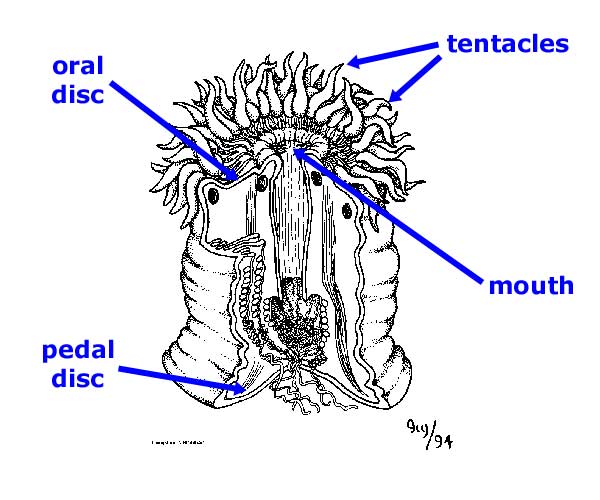Sea Anemones and Acrorhagial Aggression
When two sea anemones are placed together, and their tentacles intertwine, the anemones can either remain in contact, disband, or begin stinging each other with the “stinging cells” (nematocysts) on their acrorhagi. The third option constitutes an evolutionary example of aggression, seeing as the nematocysts are basically spring-loaded coils which inject paralyzing neurotoxin into their targets, killing them or forcing them to withdraw. Some scientists doing work in the 70’s and 80’s discovered that the likelihood that the anemones would wage war on each other was dependent on size, and, genetic similarity
. Until now the SPLC has done nothing to combat this form of Ocean-floor Racism. I say: A polyp-on-polyp hate crime is still a hate crime.
Anatomy of a hater ...

Excerpt:
Adult Actinia tenebrosa are able to distinguish between adult and juvenile clonemates and non-clonemates on tentacle contact, and aggression is directed only against non-clonemates. These findings support similar results for other anemones (Francis, 1973a,b; 1976, 1979; Bigger, 1976, 1980; Purcell, 1977) corals (Hildemann et al., 1975; Bigger and Runyan, 1979) and a colonial hydroid (Ivker, 1972).
+.
Adult aggression is able to cause the death of juvenile non-clonemates and results in the separation of genotypically dissimilar adults. + Since defending adults are almost always successful in adult-adult conflicts (Ottaway, 1978), the immigration of dissimilar adults should be prevented by conflict with the resident clone.
D.J. Ayre, Inter-Genotype Aggression in the Solitary Sea Anemone Actinia tenebrosa. 1982.
PF